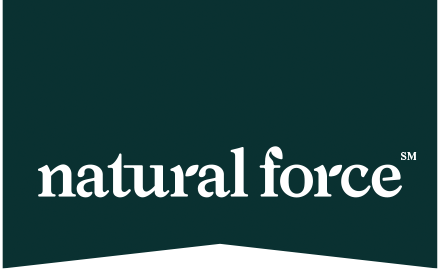Organic Whey vs Regular Whey Protein — What’s the Real Difference?

If you've ever wondered whether it's worth paying more for organic whey vs regular whey, you're not alone. While both deliver high-quality protein, organic whey comes from pasture-raised cows without synthetic hormones or antibiotics and supports more sustainable farming practices. In this post, we'll break down the key differences, benefits, and when it makes sense to choose organic.
In this article, you will learn:
- Why Organic Whey Protein is Worth It
- Where Regular Whey Comes From
- The Problem With CAFOs
- How to Go Beyond Organic
Why Organic Whey Protein is Worth It
From a nutritional perspective, both regular and organic whey products contain similar levels of protein, carbohydrates, and fats, which leads some to conclude that “the difference” is not worth it, but this reductionist viewpoint ignores the long-term and as-yet unknown impacts of industrial dairy production on the land, animals, and humankind.
Organic certified dairy addresses nearly all the issues related to CAFO production:
- The cows are required to have access to pasture throughout the growing season
- 30% of their diet must come from grass
- Supplemental feed must be non-GMO (genetically modified organism) and organically grown
- Humane treatment and the ability to express natural behavior are protected
- The use of antibiotics and growth hormones is prohibited
- Soil fertility must be protected to avoid environmental degradation
Because of the additional work and effort required to implement these requirements, Organic dairy (and whey protein) typically costs more than regular whey, but this is money well spent.
By buying Organic whey protein, you are “voting with your dollars” and investing in a better future by helping to ensure that an alternative to CAFOs exists.
Seemingly small decisions like this make an impact. Due to the growing consumer demand for better quality food products, Organic dairy now represents 4% of all U.S. dairy production, with more and more farmers joining the program each year.
Where Regular Whey Protein Comes From
Since whey is a byproduct of milk, to understand where regular whey comes from, you have to look at conventional dairy production.
Unlike the small, family farms of yesteryear, most modern-day dairy production is conducted on a vast, industrial scale. To ensure efficiency and profitability, the animals are kept in crowded, tightly cramped buildings called CAFOs (confined animal feeding operations).
In the U.S., the largest of these operations houses over 30,000 dairy cows, although some international producers are planning on building 100,000 animal operations in the near future.
Antibiotics, Inhumane Conditions, and Candy: The Problem with CAFOs
Although CAFOs are good for business, they are not good for anyone (or anything) else.
The overcrowded conditions are a fertile breeding ground for disease, so farmers add large quantities of antibiotics directly to the feed. This practice has been implicated in the emergence of antibiotic-resistant strains of bacteria, which have the potential for spreading to human populations.
Without access to sunlight, clean pasture, room to move, or the ability to properly socialize, CAFOs also cause a great deal of stress and trauma to the animals confined in them. There have been recent studies that both confirm that cows are more intelligent than we previously thought and that they suffer significant negative impacts when living in factory farms.
CAFO operators often disregard the fact that cows evolved to eat grass, feeding them a diet that mostly consists of corn, but adding in anything else they can find to save money and increase production, including candy, waste from poultry production, and other biologically inappropriate substances. Just like humans, cows that eat an improper diet are more susceptible to disease, infection, and other health conditions.
There are numerous other issues related to CAFOs and the way conventional dairy (and therefore whey) is produced. To learn more, we recommend reading Fast Food Nation by Eric Schlosser (or watching the movie of the same name).
Beyond Organic
As good as the Organic certification is, here at Natural Force, we constantly strive to “Go Beyond”.
We have done this with our Organic Grass-fed Whey Protein by achieving additional certifications like Project Non-GMO, Certified Humane, and Paleo Friendly.
- These additional certifications guarantee that the cows who make our whey protein have a fully grass-based diet, have even stricter humane treatment standards, and that none of the ingredients used in our products (like flavorings) are sourced from genetically modified organisms, contain gluten or grains, or any other unnatural substances.
Related Articles
• How Whey Protein Is Made: Step-by-Step Process & Quality Insights
• Best Keto Diet Supplements for 2025: The Ultimate Keto Supplement Guide
• How Whey Protein Is Made: Step-by-Step Process & Quality Insights
Frequently Asked Questions
Is organic whey protein more nutritious than regular whey? Not significantly in macronutrients (protein, carbs, fat) — both provide similar protein levels. But organic whey often comes from cows raised on pasture, without antibiotics or hormones, which may support better long‑term quality and purity.
Why is organic whey more expensive than regular whey? Organic whey requires adhering to strict farming standards: cows need pasture access, feed must be non‑GMO, and no synthetic hormones or antibiotics are allowed.
Does choosing organic whey help the environment or animal welfare? Yes — organic dairy farming typically involves better conditions for cows (pasture access, no antibiotics) and supports more sustainable practices like soil conservation.
Are there any downsides to organic whey? The main tradeoffs are cost and limited availability. Also, “organic” doesn’t necessarily mean completely grass‑fed, unless specified.
How do I know if a whey protein is truly organic? Look for USDA Organic certification on the label. Also, check for additional certifications like Non-GMO or humane farming standards to ensure higher quality.
(Want articles like this via email? Here's the sign up!)
Editor's Note: This article was originally posted in January 2015 and has been completely revamped and updated for accuracy and comprehensiveness.

